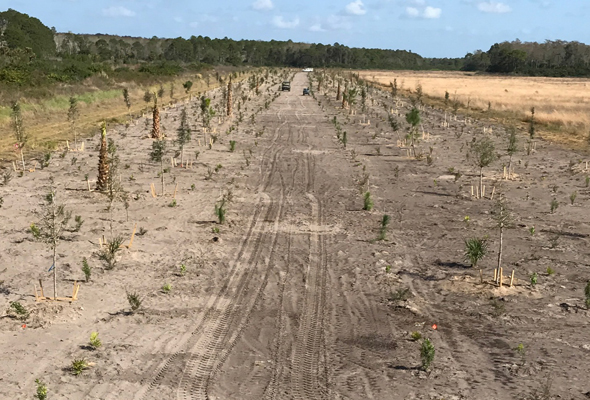Forestry and Environmental Mitigation, Reclamation, and Restoration in Florida
FES℠ is proud to contribute to the development and implementation of mitigation, reclamation, and restoration plans.
Mitigation Solutions in Florida
We specialize in utilizing innovative equipment to ensure these projects are completed successfully and receive approval upon their completion. Whether it is enhancing habitat, providing maintenance treatments to areas, creating habitats, or restoring ecosystems, FES℠ is well suited to provide successful outcomes.
Mitigation creates solutions to offset ecosystem impacts. Mitigation is the development of solutions to offset impacts that have occurred within wetland and/or upland environments. Mitigation efforts may include the preservation, enhancement, restoration, rehabilitation, or creation of various ecosystems either on-site or off-site of where the impact occurred.
Reclamation Restores Ecosystems
Reclamation involves returning a site to the condition it was pre-disturbance. FES℠ works closely with landowners to assess, plan, and implement a successful reclamation strategy for their property. Reclamation, as with mitigation, can involve the creation, enhancement, rehabilitation, and/or restoration of various types of ecosystems.

Restoration: Back To Nature
Restoration typically involves returning a site’s vegetation back to what naturally occurred there historically. Depending upon the current site-conditions it may take several different restoration treatments before a site can be fully restored. Typically, the restoration process takes several years as there are no quick fixes.
Mitigation, reclamation, and restoration projects in Florida can require all types and sizes of native herbaceous plants, shrubs, and trees
Typically, mitigation, reclamation, and restoration projects can require all types and sizes of native herbaceous plants, shrubs, and trees, and FES℠ is able to locate, obtain, and plant the various types and sizes of plant material needed to meet a project’s specifications. All three processes contain management elements similar to one another.
Habitat enhancement and restoration
Habitat enhancement and restoration of vegetative communities to their naturally occurring historical state can be accomplished through several types of treatments including prescribed burning, chemical applications, and mechanical vegetative control.
Habitat creation
Habitat creation is accomplished in both wetland and upland ecosystems and can involve either the direct seeding or planting of native herbaceous plant, shrub, and tree material to mimic naturally occurring ecosystems.
More Information on Mitigation, Reclamation, and Restoration
Once restoration is complete, a vegetative maintenance program is put into action to reduce the risk of the site reverting back to its previous unrestored state. The key to restoration is the continued evaluation and maintenance of the site utilizing silvicultural treatments. Successive treatments will enable easier future management and reducing costs of restoration over time. For more information on mitigation, reclamation, and restoration plans, contact us and we will be able to assist you with your options.
